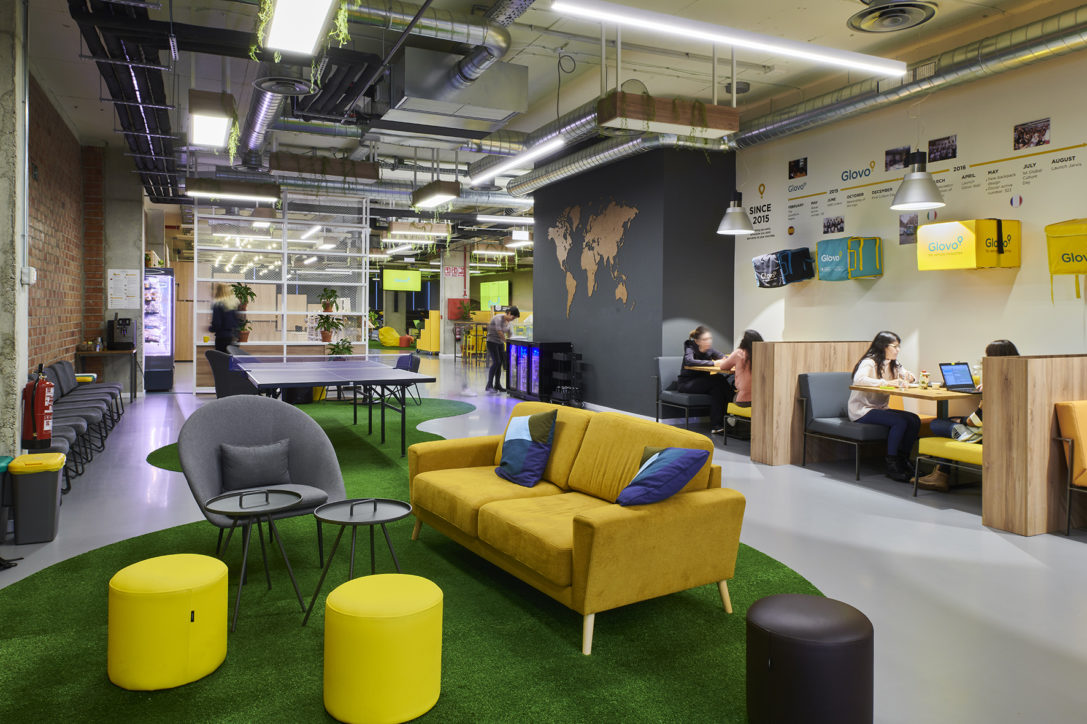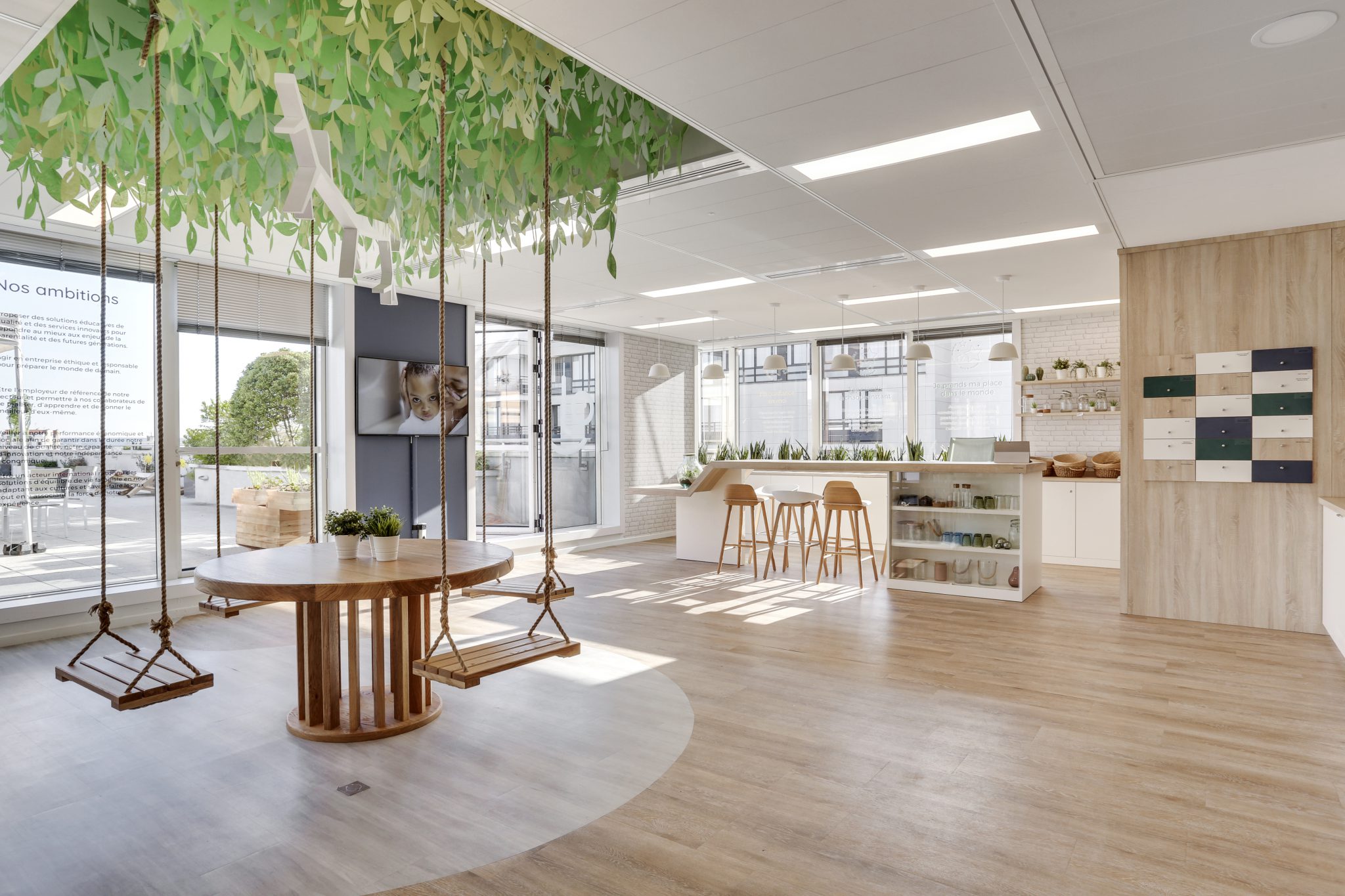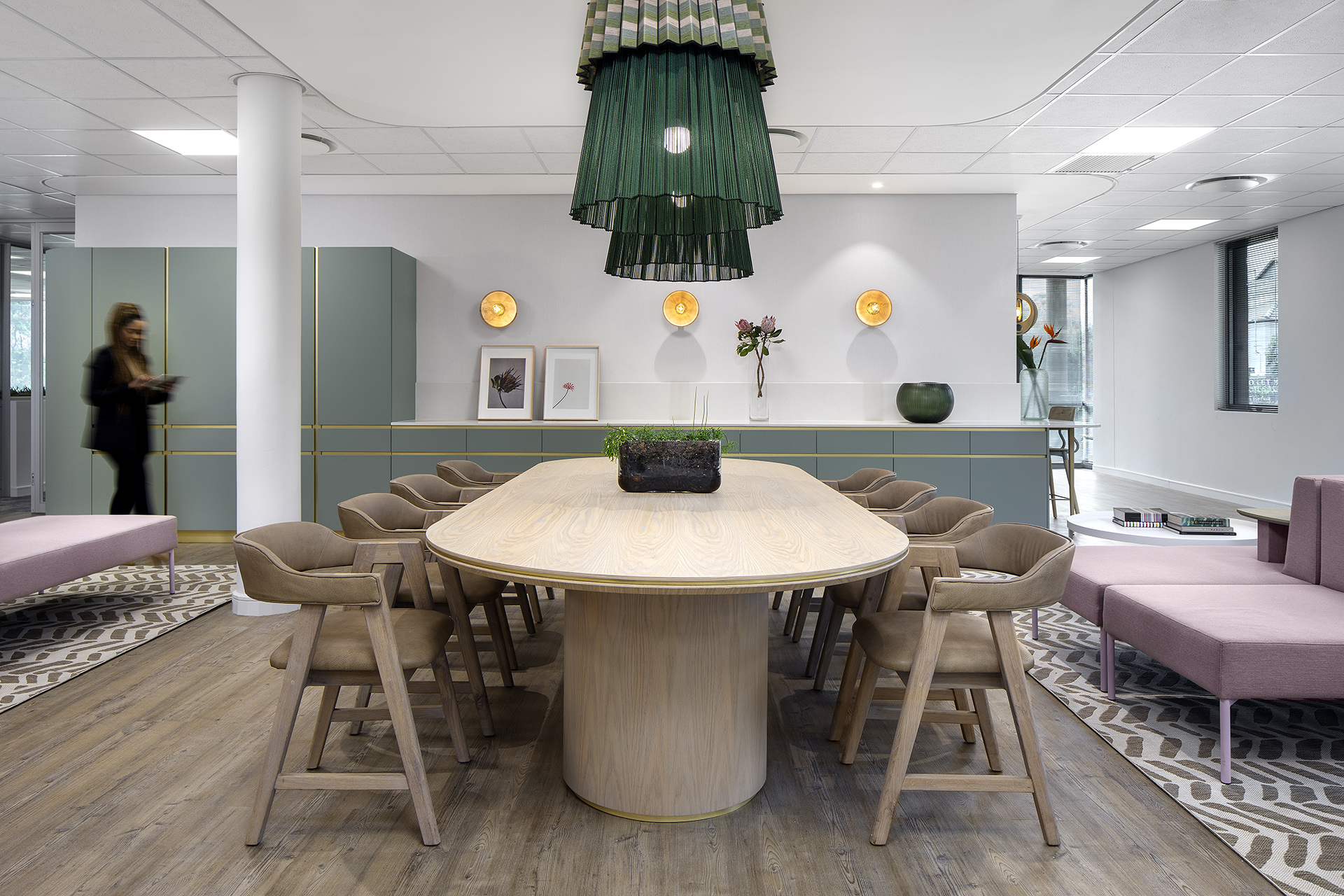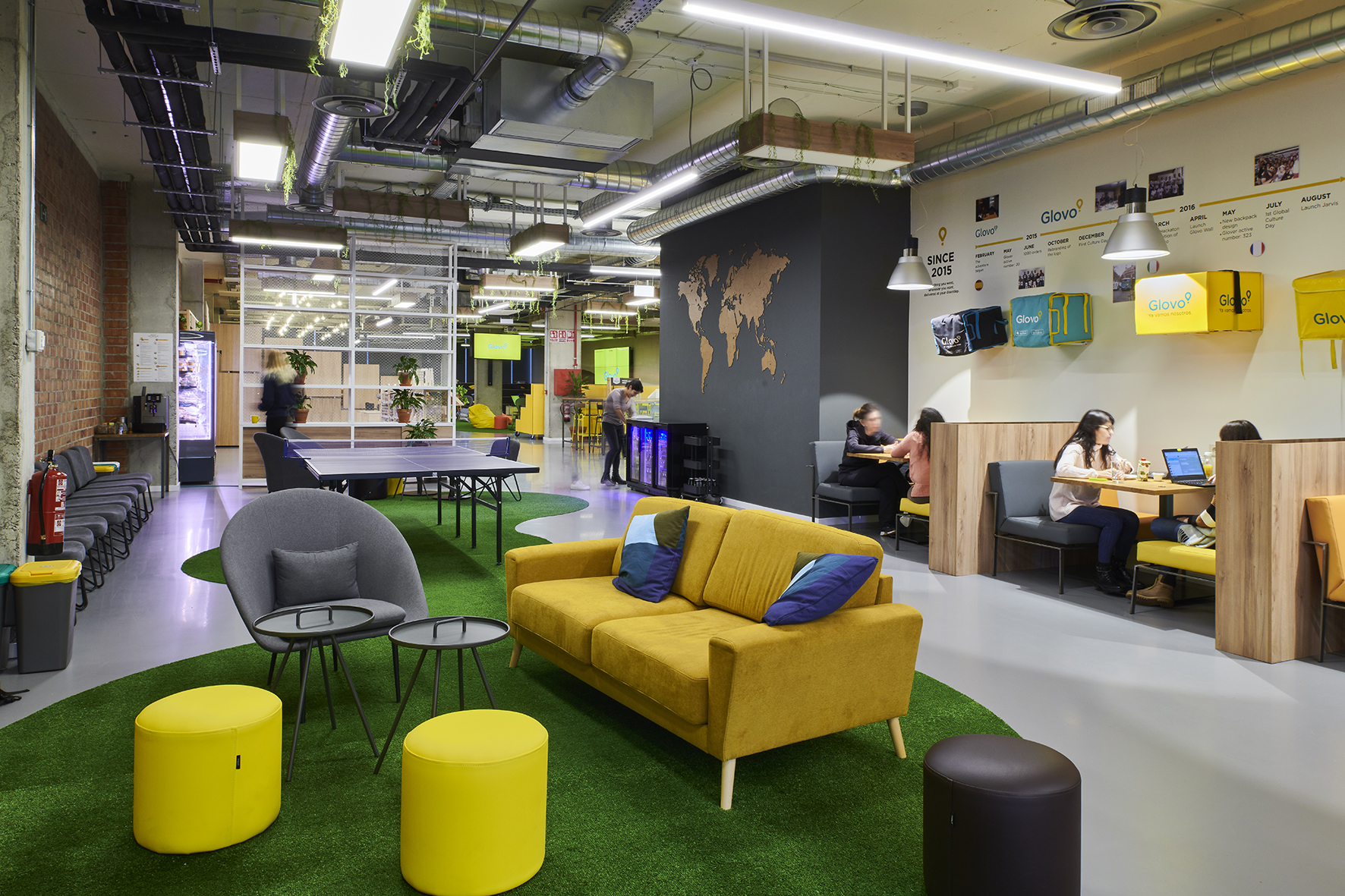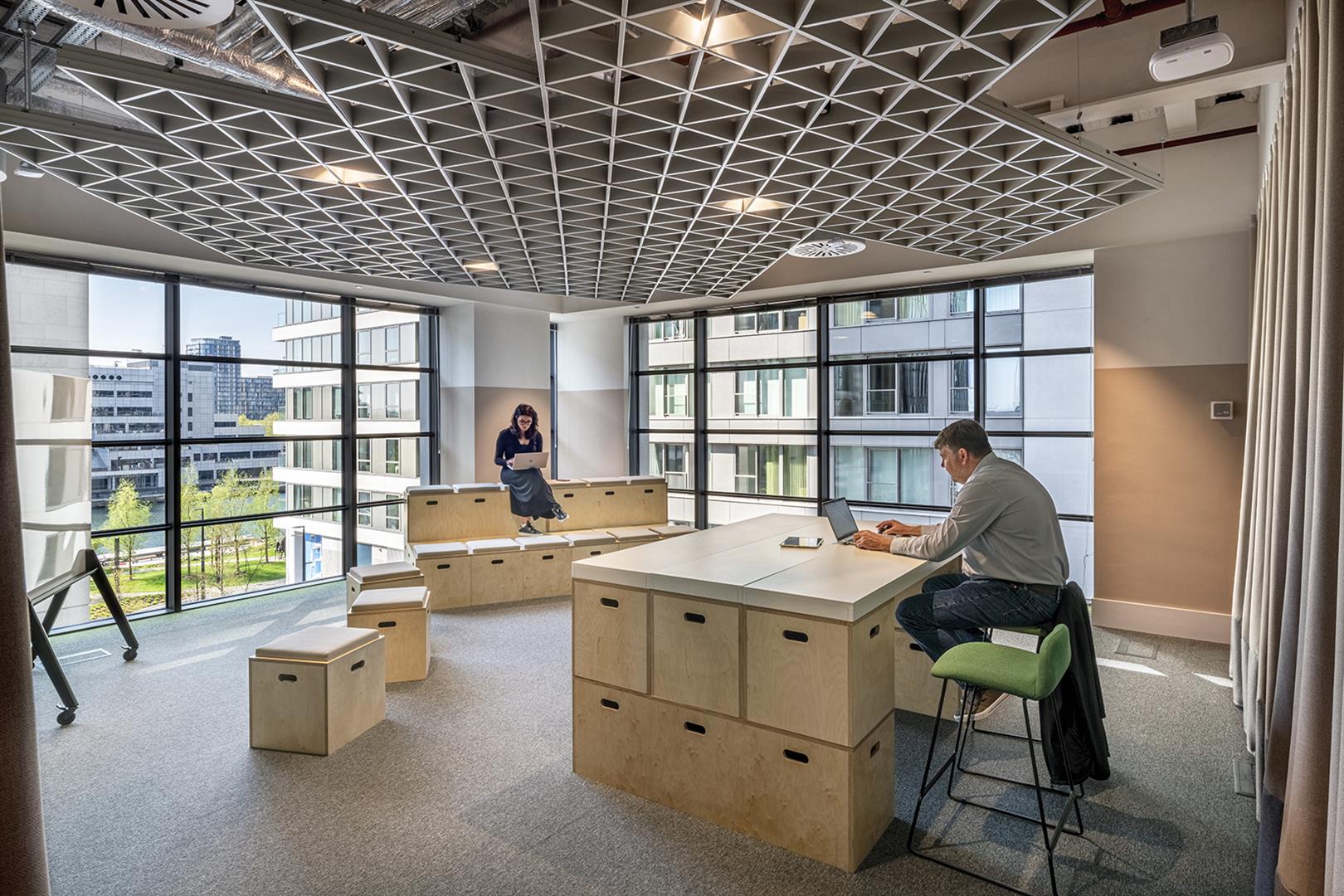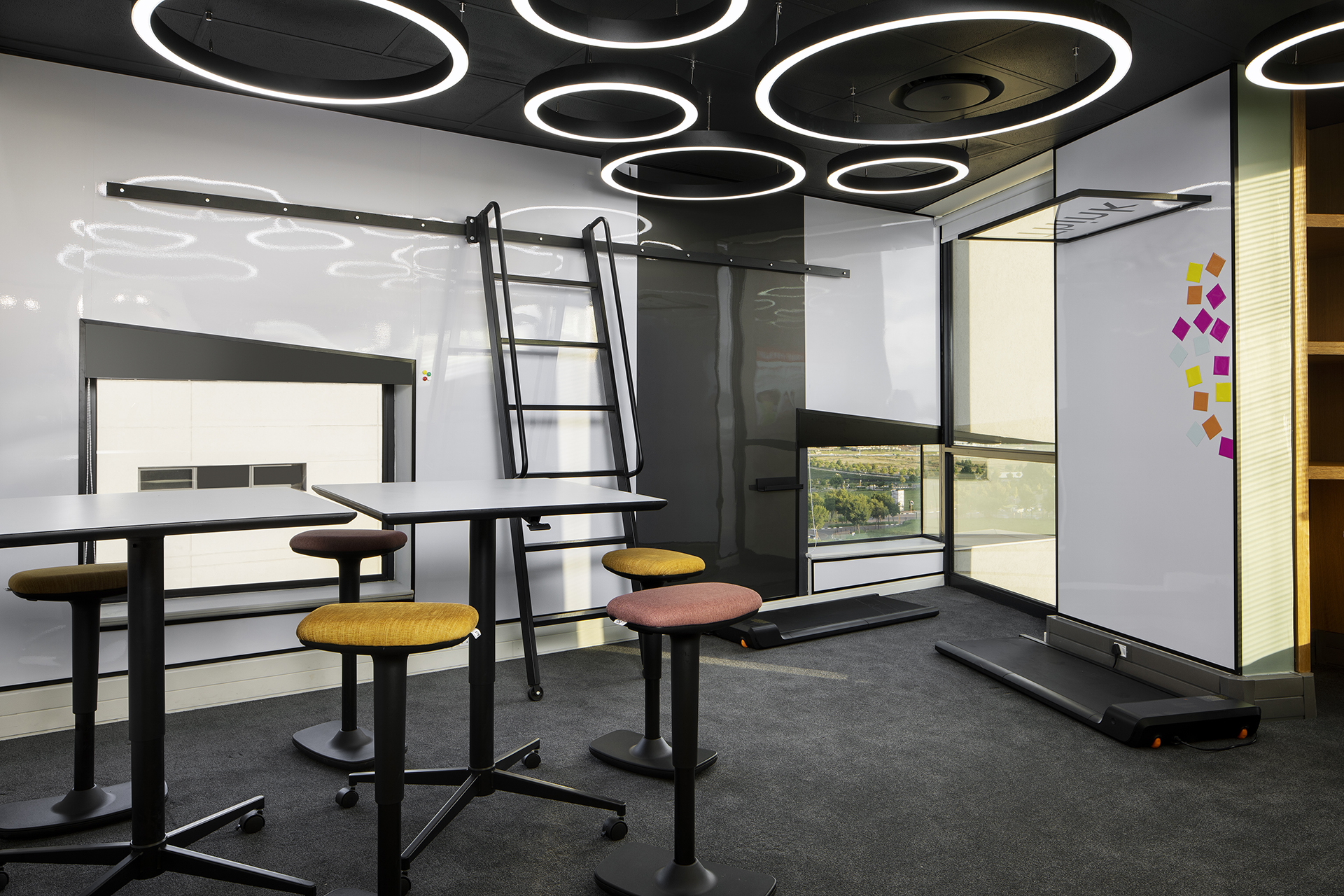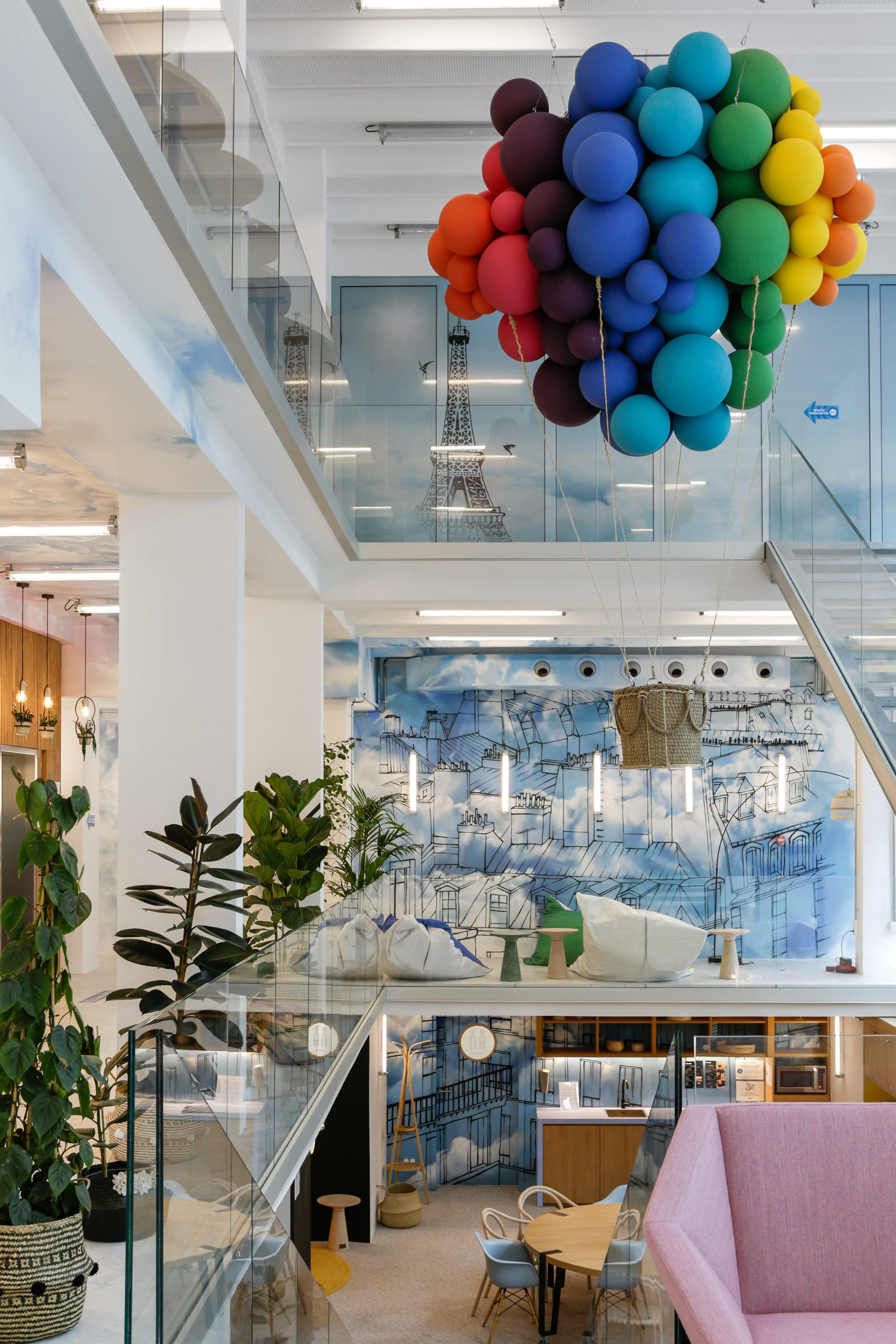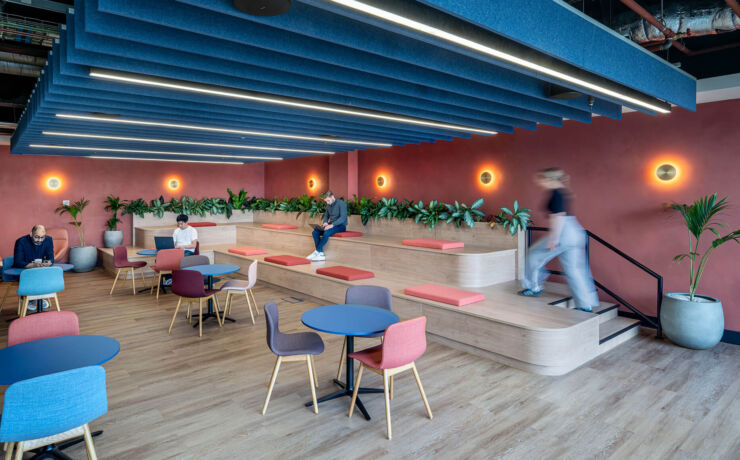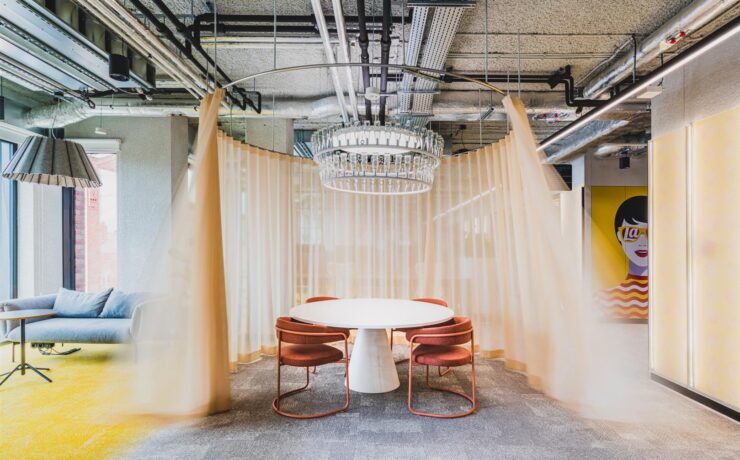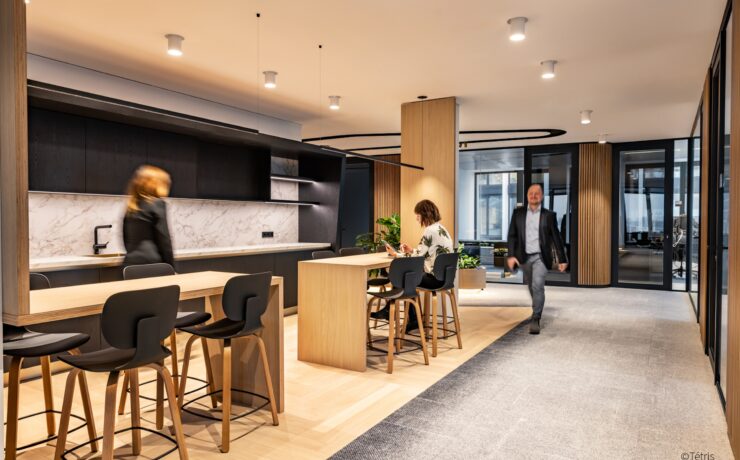The right furniture can encourage collaboration and create a working environment that supports new employee needs.
As more companies establish hybrid work models with employees working remotely part of the week, many organisations are examining how office design can support these new ways of working.
Businesses want offices that help employees to strike the right balance between in-office and remote work, empowering people to work from home when they need to while also engaging them in the community and company culture that often develops more richly face-to-face.
Workplace design that prioritises collaborative and social space over individual workstations can help create a successful hybrid office, encouraging employees to come into the office for teamwork and relationship-building and to favour focus tasks when working remotely.
Reimagining office space
With teams working together face to face less frequently, employees may feel less connected to workplace culture. The design of the hybrid office should encourage interaction and communication to maintain a vital sense of community.
Reorganising layouts can make a significant difference to how open and communal an office feels, benefiting employees’ ability to collaborate, share information and cultivate relationships.
A more open space plan, for example, can help recent hires develop a sense of belonging more quickly and encourage spontaneous interaction between employees, which can improve communication within teams and the workforce.
Zoning multiple types of workspace will support employees in their different collaborative work – whether that’s semi-private space for mentoring and small meetings, lounge space for informal gatherings, or group desking for team-based work. For employees who prefer the office for focus tasks, silent zones can offer space for individual working.
Flexibility is key – with varying numbers of staff in the office from day to day, an effective layout needs to accommodate teams of different sizes while maintaining a dynamic atmosphere.
Furniture makes the space
The right furniture can transform the working environment by creating new ways to use the existing space.
“The aesthetics, ergonomics and placement of furniture is a critical component to the successful functioning of a space,” says Steven Fish, Director, Furniture Solutions Department, South Africa.
Seating and furnishings in different styles, colours and materials can delineate different zones without the need to install permanent partitions, maintaining openness throughout the space. A large sofa set might create a relaxation and socialising area, while high seating and tables can establish informal workspace. Ergonomic chairs along a communal desk offer individual workstations, while ready-built enclosed pods can provide private space for personal calls or small meetings.
Modular furniture that can be put together and taken apart to accommodate different numbers of people increases the adaptability of the office for hybrid workforces. A small auditorium-style area designed with seating cubes that can be stored, for example, enables town halls without designating permanent space capable of hosting the entire staff. Movable shelves can do double duty as storage and flexible partitioning for ad hoc meeting space.
Acoustic comfort is an important consideration for open spaces, so the use of sound-absorbent materials is key to ensure privacy and minimise noise travel. Thick acoustic curtains that can be moved on ceiling tracks offer a flexible way to create privacy zones where required.
“What we are looking for in furniture is a combination between functionality, sustainability and the design aesthetic that fits our client’s brand,” says Joana Molina, Furniture Solutions Assistant, Spain.
Fitting out the hybrid office
In the hybrid workspace, effective space design is more vital than ever.
A “back to the office” fit-out can help businesses get more utility out of their existing space by creating a more flexible environment that supports employees to work in the way they uniquely can in the office – whether that’s to collaborate, connect with their colleagues, or simply have the space and quiet to focus. Ultimately, this enhances employee wellbeing and attracts people into the office.
The right furniture solution, integrated in the design stage of a fit-out project, will also enhance brand identity and company culture, not only by encouraging connection between staff but also by deepening the expression of what a company stands for.
“Furniture is an extra tool for design that enhances the execution of design concepts. When furniture solutions are integrated into a project from the design stage, the fit-out itself more effectively accomplishes a client’s needs,” says Rita Carvalhomartins, Business Manager Furniture Solutions, Portugal.
Designing the office to engage employees in today’s hybrid working landscape can transform how people feel at work – and smart furniture solutions are the key to bringing great design into functioning reality.

At Tetris, we’re experts at curating the right
workplace furniture for businesses of all sizes.
Come talk to us about how our furniture team
can transform your next project.
